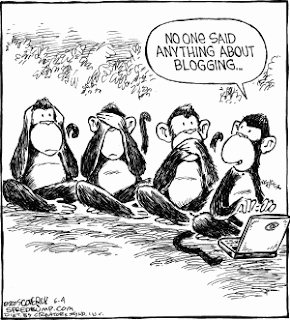
Professional advisors are a unique class of bloggers. We essentially sell advice for a living. We (rarely) make money from advertising, nor do we really want to. Blogs for advisors are often a distribution channel for thought leadership and—done well—a piece of our sales funnel. So the big question is: to blog or not to blog?
I’ve assembled a list of the top 5 reasons for both. Take a look and share your additions, deletions and comments.
Top 5 Reasons To Blog
You've got a clear point of view. As an advisor, you should have a clear, compelling POV to serve as your blog's organizing theme. Every post relates in some way to your core beliefs about how your clients can be successful.
You write regularly. No exceptions. Pick a schedule that works for you (a minimum of 2x/month) and stick to it. No matter what client emergency comes up. Why is consistency so critical? Because readers—future clients—make snap judgments about your reliability from your posts. Don’t let them view you as flighty or unreliable.
Your return (financial, PR or otherwise) warrants your time investment. Be clear on your goals, time commitment and desired outcomes. You won’t reach your goals overnight, but monitor your metrics. This is an investment in your future and you want to make it worth your while.
You know it’s about your audience. Look for new ways to present ideas that will engage your readers. If they make comments, write back! They have taken some of their valuable time to connect with you—don’t blow it now. I’m still waiting for a so-called PR blogger to engage in a conversation he started—6 weeks later!
You hold yourself publicly accountable. Not only do you publish regularly, but you are willing to be accountable to your readers. This means that you don’t just promote your blog, you own up to mistakes and deal with critics (and trolls) effectively.
Top 5 Reasons NOT To Blog
You sound like everybody else. If all you have to say is a regurgitated version of someone else’s content, you won’t be successful in the blogosphere. Find your authentic voice and share it. Hint: It may take a few posts—with feedback—to find the voice that best suits you.
You insist on putting your political or religious views front and center. Just don’t. You’re not a political or religious blogger, this is about your business. Your goal is to draw the right clients to you, not to convert someone to your religious beliefs. Stick to your expertise and insights.
Your writing doesn’t cut it. Long, jargon-packed sentences will not help you demonstrate your expertise. Since I have yet to meet a professional advisor who believes they are NOT a good writer, get a 2nd opinion! Or a very good editor.
Public criticism makes you wilt. Frankly, this could be all the more reason to blog—you need to toughen up and get yourself in front of a larger audience. But if you have all the work you can handle and don’t want to deal with this particular fear, simply abstain.
You never met a rant you didn’t like. We’re talking turning a mild-mannered, smart advisor into a raging beast. Haven't you witnessed emotion-fueled rants in blogs and various social media? The only thing rants bring you is fellow ranters. Is that really how you want to grow your business?
Blogging. Not for everyone, but a clear opportunity to spread your word. What would you add to the lists?





















